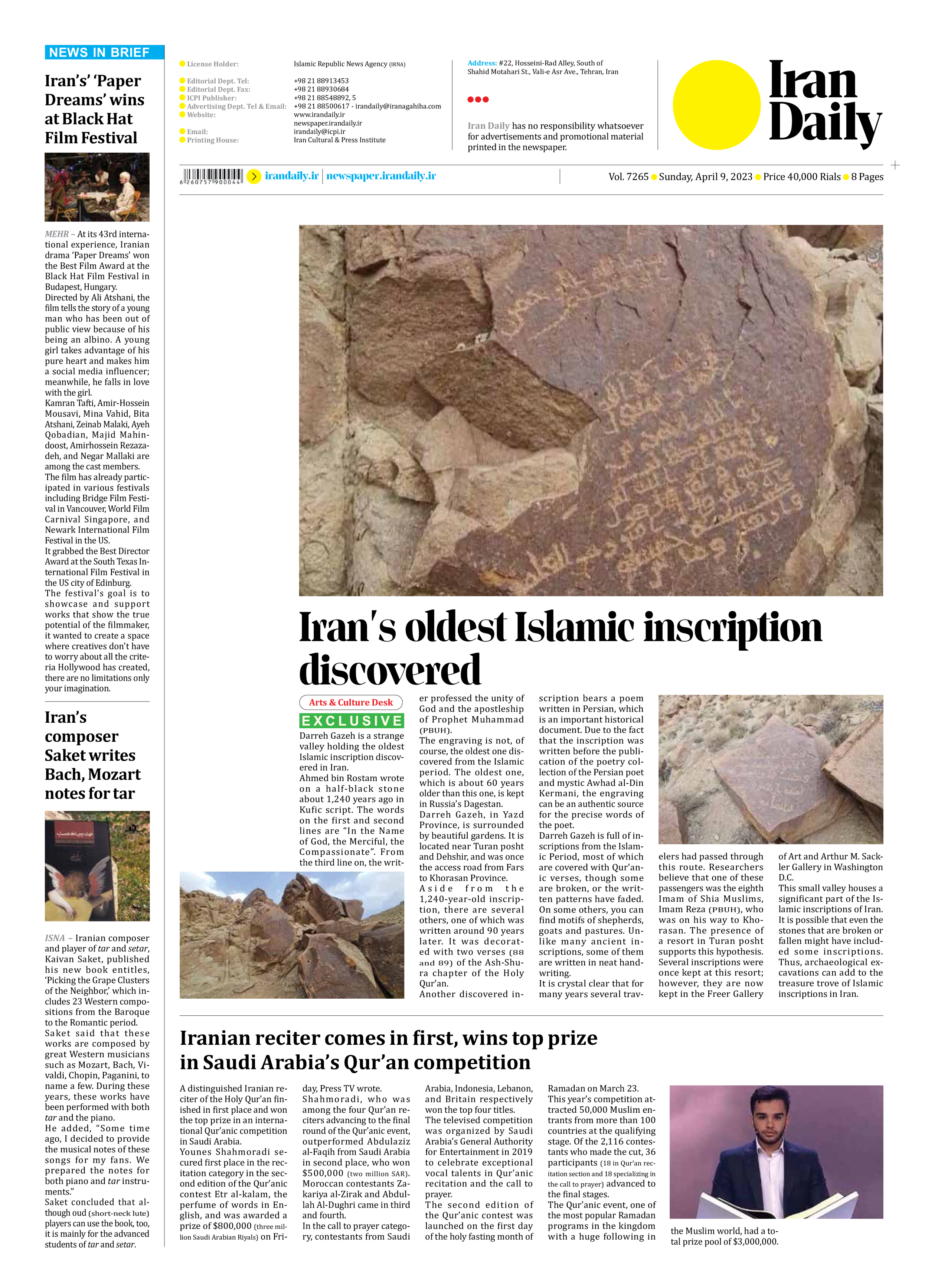
Iran’s oldest Islamic inscription discovered
Darreh Gazeh is a strange valley holding the oldest Islamic inscription discovered in Iran.
Ahmed bin Rostam wrote on a half-black stone about 1,240 years ago in Kufic script. The words on the first and second lines are “In the Name of God, the Merciful, the Compassionate”. From the third line on, the writer professed the unity of God and the apostleship of Prophet Muhammad (PBUH).
The engraving is not, of course, the oldest one discovered from the Islamic period. The oldest one, which is about 60 years older than this one, is kept in Russia’s Dagestan.
Darreh Gazeh, in Yazd Province, is surrounded by beautiful gardens. It is located near Turan posht and Dehshir, and was once the access road from Fars to Khorasan Province.
Aside from the 1,240-year-old inscription, there are several others, one of which was written around 90 years later. It was decorated with two verses (88 and 89) of the Ash-Shura chapter of the Holy Qur’an.
Another discovered inscription bears a poem written in Persian, which is an important historical document. Due to the fact that the inscription was written before the publication of the poetry collection of the Persian poet and mystic Awhad al-Din Kermani, the engraving can be an authentic source for the precise words of the poet.
Darreh Gazeh is full of inscriptions from the Islamic Period, most of which are covered with Qur’anic verses, though some are broken, or the written patterns have faded. On some others, you can find motifs of shepherds, goats and pastures. Unlike many ancient inscriptions, some of them are written in neat handwriting.
It is crystal clear that for many years several travelers had passed through this route. Researchers believe that one of these passengers was the eighth Imam of Shia Muslims, Imam Reza (PBUH), who was on his way to Khorasan. The presence of a resort in Turan posht supports this hypothesis. Several inscriptions were once kept at this resort; however, they are now kept in the Freer Gallery of Art and Arthur M. Sackler Gallery in Washington D.C.
This small valley houses a significant part of the Islamic inscriptions of Iran. It is possible that even the stones that are broken or fallen might have included some inscriptions. Thus, archaeological excavations can add to the treasure trove of Islamic inscriptions in Iran.







